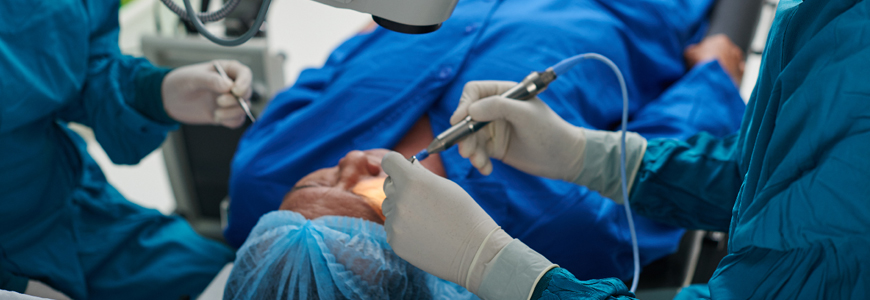Intraocular Lens Exchange: Causes, Complications, Considerations
Q&A with corneal specialist, eye surgeon

Advances in cataract surgery and intraocular lens (IOL) technology have improved surgical outcomes and decreased perioperative complications, but sometimes the need still arises for a lens exchange, making it important for ophthalmologists to understand the causes, outcomes, complications, and techniques associated with lens exchanges.
A recent Duke study, presented at the 2020 American Society of Cataract and Refractive Surgery conference, sought to deepen surgeons’ understanding of IOL exchange, evaluating monofocal intraocular lenses (M-IOLs) and presbyopia correcting intraocular lenses (P-IOLs) in 91 eyes over a four-year period. Lead author was former Duke Eye Center resident Mark Goerlitz-Jessen, MD. In this Q&A, corneal specialist and study co-author Melissa B. Daluvoy, MD, discusses the key findings from the study.
Q: What are some of the reasons for IOL exchange?
Daluvoy: Indications for exchange include mechanical failure; trauma; eye conditions that predispose patients to dislocation, such as pseudo exfoliation syndrome; and complications during initial surgery, such as small tears in the capsular bag that result in dislocation over time. Patient dissatisfaction with visual outcomes or intolerable visual phenomena is another reason for lens exchange.
Q: Why do patients sometimes become dissatisfied with their lenses?
Daluvoy: There are now premium IOLs that correct presbyopia, to reduce patient’s need for reading glasses. The technology keeps getting better and better, but sometimes people don't like the quality of their vision or they can’t adapt to it. There can be glare around lights, cobwebbing, or photopsias that we can't necessarily explain. In those cases, we can exchange the premium lens for a monofocal version and hope they'll be happier with their quality of vision.
Q: What are the key findings from the study?
Daluvoy: This study solidified a lot of the things we knew, which in a time where we’re always looking for new methods of doing things, is equally as important. Some of the very first methods of IOL exchanges, such as using an anterior chamber IOL, are still very good choices for most of these cases and equally as effective as some of the more modern procedures, such as scleral-sutured, iris-sutured, and trans-scleral fixation. Our findings reiterated that lens exchange is a rare surgery, but overall, the outcomes are very safe and positive.
Specifically, our study concluded that:
- Dislocation was the main overall cause for IOL exchange
- P-IOLs were most frequently explanted due to lens-induced visual disturbances
- Prior ocular surgery is a possible risk factor for IOL exchange
- Patients with both M-IOLs and P-IOLs had improved uncorrected distance visual acuity and best corrected visual acuity after IOL exchange
Q: What advice can you give surgeons when counseling their patients about IOL exchange?
Daluvoy: There’s no need to prolong lens replacement; more than likely, patients will have a successful surgery with a low complication rate. But surgeons should always consider patient risk factors, including the complexity of the primary cataract surgery, other prior ophthalmic surgery, and ocular diseases as they discuss any lens-based procedure with their patients. Lastly, when considering patient referral to the Duke Eye Center, it’s important to note that we can deploy specialist teams for complex cases. For example, if a lens dislocates far into the back of the eye, a retinal surgeon needs to perform a vitrectomy to make sure there is no damage to the retina upon lens removal. At Duke, this can be achieved in a single surgery instead of two separate ones.